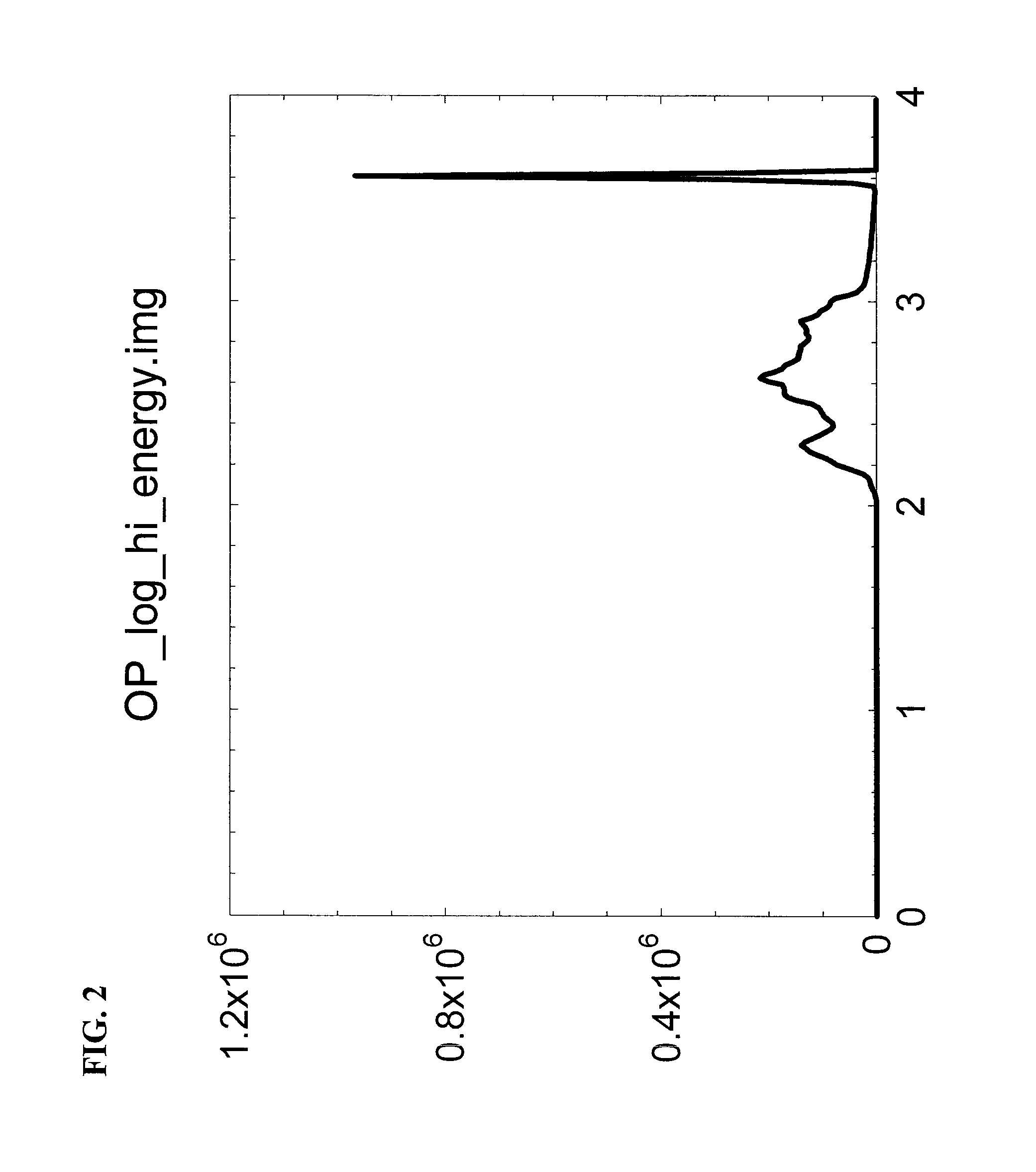Renormalization of dual-energy images
a dual-energy image and renormalization technology, applied in the field of dual-energy projection radiography, can solve problems such as interference with ability
- Summary
- Abstract
- Description
- Claims
- Application Information
AI Technical Summary
Benefits of technology
Problems solved by technology
Method used
Image
Examples
Embodiment Construction
[0020]In the following description, bone and soft-tissue decomposition images are described to illustrate an embodiment of the present invention. The present invention may be applied to any two suitably chosen materials.
[0021]FIG. 1 is a functional block diagram of the method for creating renormalized images in accordance with an embodiment of the present invention. In step 1 dual-energy images are acquired. Blocks 10 and 20 represent the log-transformed image data for the high- and low-energy images, respectively.
[0022]The pixel values for the log-transformed high- and low-energy images can be expressed as:
PVH=log(IH)=log(IH0)−μBHtB−μSHtS (1)
and
PVL=log(IL)=log(IL0)−μBLtB−μSLtS (2)
where PVH and PVL represent the values stored in each pixel of the high- and low-energy images. PVH and PVL are proportional to the natural logarithm of the intensity of the high-energy x-ray detected (IH) and the low-energy x-ray detected (IL) after those values are corrected based on factors inherent t...
PUM
 Login to View More
Login to View More Abstract
Description
Claims
Application Information
 Login to View More
Login to View More - R&D
- Intellectual Property
- Life Sciences
- Materials
- Tech Scout
- Unparalleled Data Quality
- Higher Quality Content
- 60% Fewer Hallucinations
Browse by: Latest US Patents, China's latest patents, Technical Efficacy Thesaurus, Application Domain, Technology Topic, Popular Technical Reports.
© 2025 PatSnap. All rights reserved.Legal|Privacy policy|Modern Slavery Act Transparency Statement|Sitemap|About US| Contact US: help@patsnap.com



